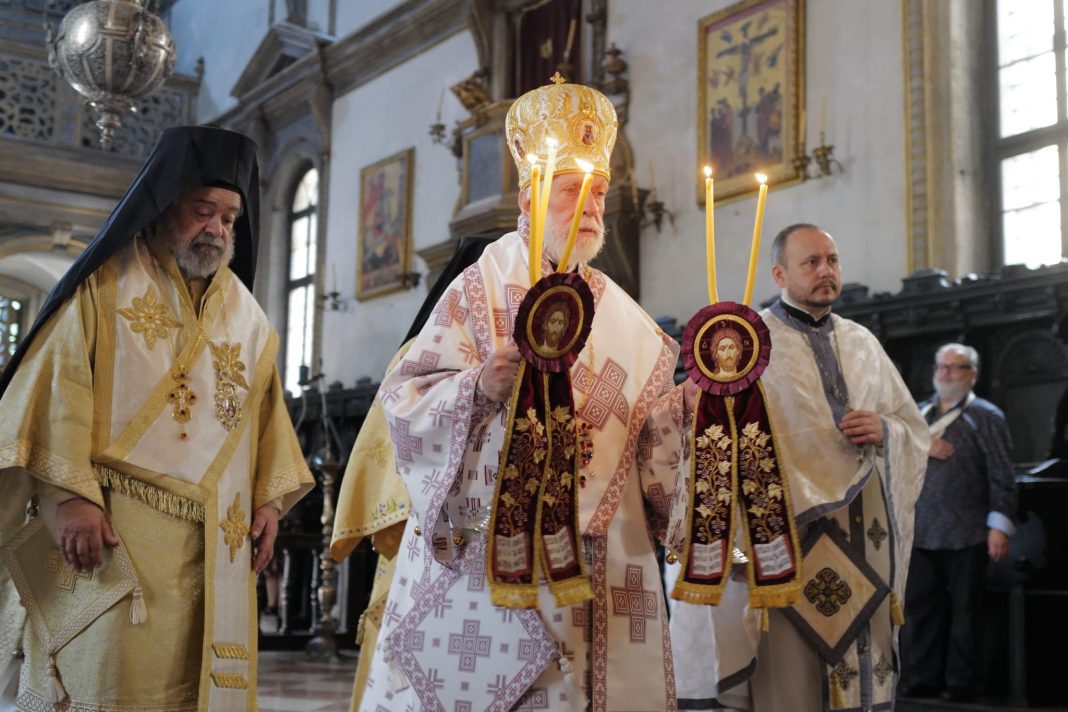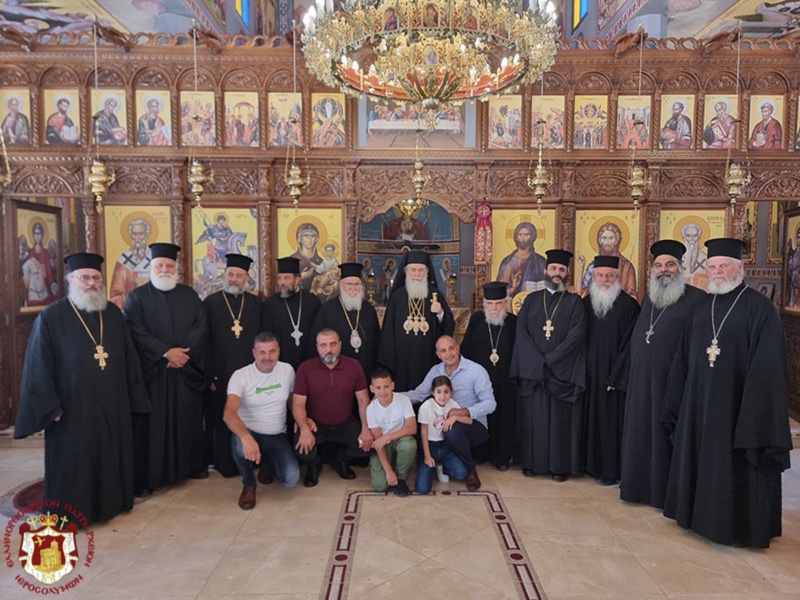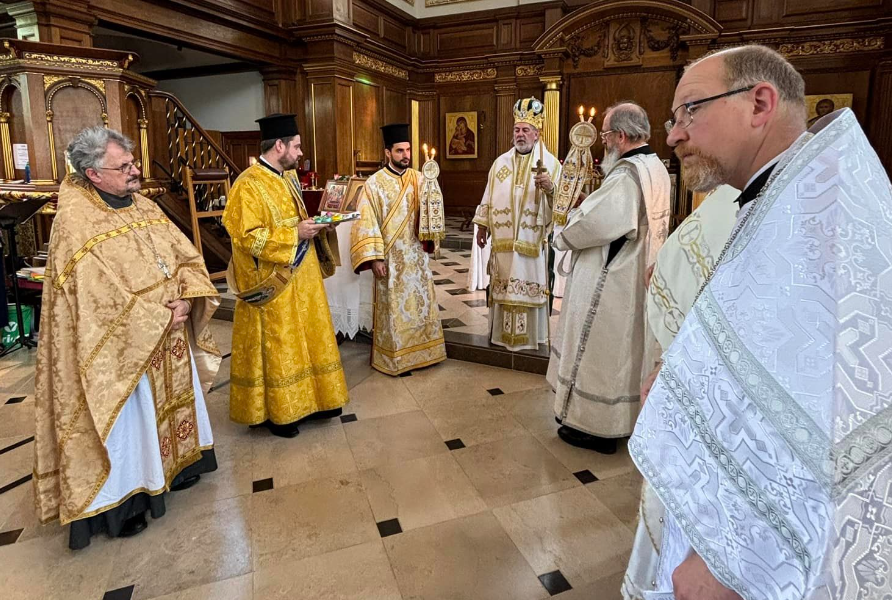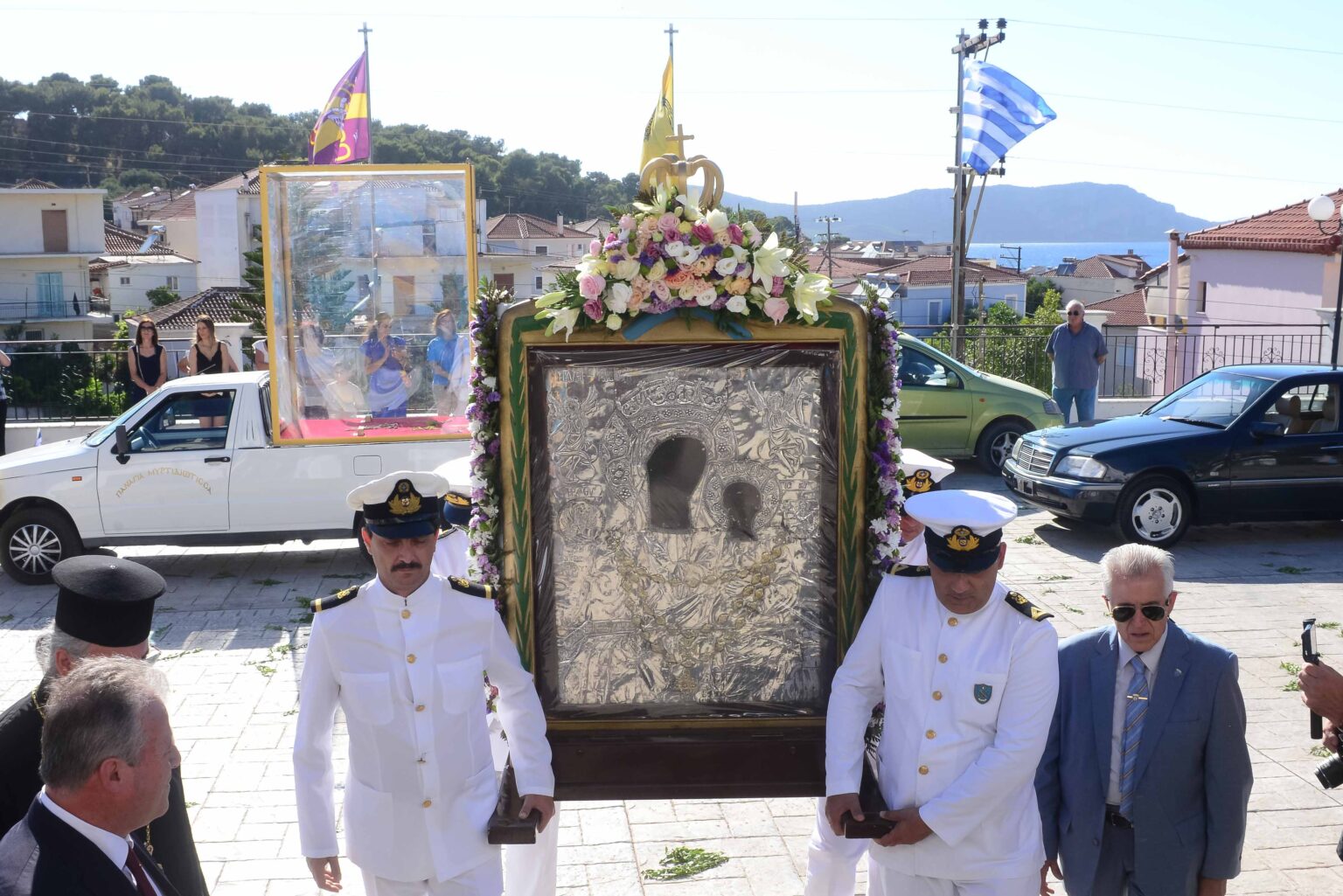Vasilikos the Martyr, Bishop of Comana (22 May)
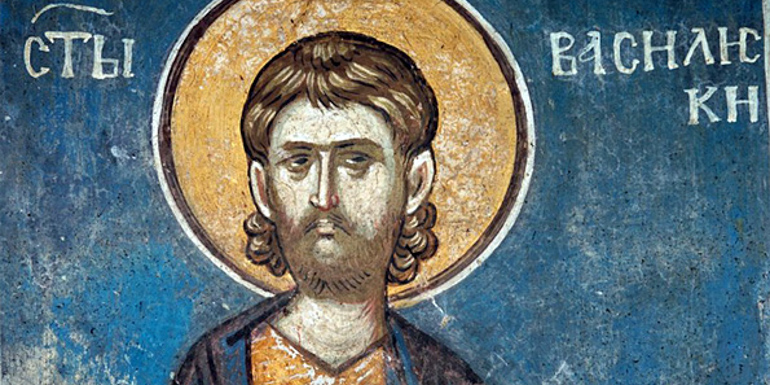

The Holy Martyr Basiliscus was a nephew of the Great Martyr Theodore the Recruit (February 17), and he suffered together with his brothers Eutropius and Kleonikos during the persecution of the emperor Maximian Galerius (305-311). The holy martyrs Kleonikos and Eutropius (March 3) were crucified, but the martyr Basiliscus was sent to Comana where he was detained in prison.
The governor Agrippa arrived in the city of Amasea, and started a persecution against Christians. Saint Basiliscus in prison prepared himself for his impending ordeal. The Lord appeared to him in a dream, promising the martyr His help, and foretold his martyric death at Comana. Saint Basiliscus asked the prison guards to let him go to his native village to bid his relatives farewell. They let him go, since they respected him for his holy life and working of miracles. Arriving home, Saint Basiliscus saw his family one last time, and urged them to stand firmly in the Faith.
When Agrippa learned that Saint Basiliscus had gone to see his relatives, he went into a rage. He chastized the prison guards, and he sent a detachment of soldiers after the martyr, headed by a cruel magistrianum (adjutant of the governor). Meeting Saint Basiliscus, who was actually on his way back, the magistrianum placed heavy chains on him, and shod him with metal sandals with nails driven into the soles, and set off to Comana.
Arriving at a certain village during the hot afternoon, the travellers stayed at the house of a woman named Troana. The soldiers went into the house to relax and refresh themselves with food, and they tied the martyr Basiliscus to a dry tree. Standing in the heavy chains beneath the scorching sun, the saint prayed to God. Suddenly a Voice was heard from above, “Fear not, for I am with you.”
The earth shook, and a spring of water came forth from the resulting fissure. The magistrianum, the soldiers and Troana, rushed out of the house, frightened by the earthquake. Shaken by the miracle which had taken place, they set the martyr free. Sick people from the village came to the holy martyr and received healing through his prayers.
When the saint finally stood before Agrippa, he was commanded to offer sacrifice to the pagan gods. He replied, “I offer to God a sacrifice of praise and thanksgiving every hour.” They led him into a pagan temple. In an instant fire came down from Heaven, which burned the temple, and reduced the idols to dust. Then in a blind rage Agrippa gave orders to behead Saint Basiliscus and throw his body into the river. The death of the martyr occurred in the year 308.
Christians quickly gathered the remains of the holy martyr, and buried them by night in a ploughed field. Upon this spot a church was built in honor of Saint Basiliscus, into which they transferred his relics. Through the prayers of the holy martyr healings began to occur. The saint appeared in a dream to Saint John Chrysostom (November 13) before his death at Comana and said to him, “Tomorrow we shall be together.” Saint Eusignius (August 5) was an eyewitness to his sufferings and told the world about the struggles of Saint Basiliscus.
This Martyr was from the city of Amasia on the Black Sea, and a nephew of Saint Theodore the Tyro (Feb. 17). When his fellow Martyrs Eutropius and Cleonicus had been crucified (see Mar.8), Basiliscus was shut up in prison. As he was praying the Lord to count him also worthy to finish his course as a martyr, the Lord appeared to him, telling him first to go to his kinsmen and bid them farewell, which he did. When it was learned that he had left the prison, soldiers came after him, and brought him to Comana of Cappadocia, compelling him to walk in iron shoes set with nails. He was beheaded at Comana, and his body was cast into the river, during the reign of Diocletian (284-305).
Basiliscus was a kinsman of St. Theodore the Tyro. He was tortured together with Eutropius and Cleonicus. When the latter two were crucified and had died (March 3), then Basiliscus was returned to prison. At that time the emperor’s deputy was being replaced, and so Basiliscus remained imprisoned for a long time. Basiliscus prayed with tears that God would not deprive him of a martyr’s death. After he prayed at length, the Lord Jesus Himself appeared to him, promised to fulfill his wish, and sent him to his village to bid farewell to his mother and brothers. Then a new deputy, Agrippa, arrived and ordered that Basiliscus be brought from the village immediately.
While Basiliscus was on his way from the village to the town of Amasea, the Lord worked a great miracle through His martyr, as a result of which many people believed in Christ. Agrippa ordered the martyr to offer a sacrifice to the idol Apollyon. “‘Apollyon’ means ‘destroyer,'” said Basiliscus, and with fervent prayer he turned the idol into dust and burned the temple with fire from heaven. The frightened Agrippa attributed this to magic and ordered that Basiliscus be beheaded. At that moment, Agrippa went insane. In his madness, he went to the scaffold, found a little blood of the martyr in the dust, and placed it under his belt, and was healed. Coming to his senses, he was baptized. Marinus, a citizen of Comana, later built a church over the relics of the saint, at the place of Basiliscus’s execution, and many afflicted people found healing there.
Apolytikion of Hieromartyr Basiliscus
Fourth Tone
Thy Martyr, O Lord, in his courageous contest for Thee received as the prize the crowns of incorruption and life from Thee, our immortal God. For since he possessed Thy strength, he cast down the tyrants and wholly destroyed the demons’ strengthless presumption. O Christ God, by his prayers, save our souls, since Thou art merciful.
Source: oca.org / goarch.org / westserbdio.org

